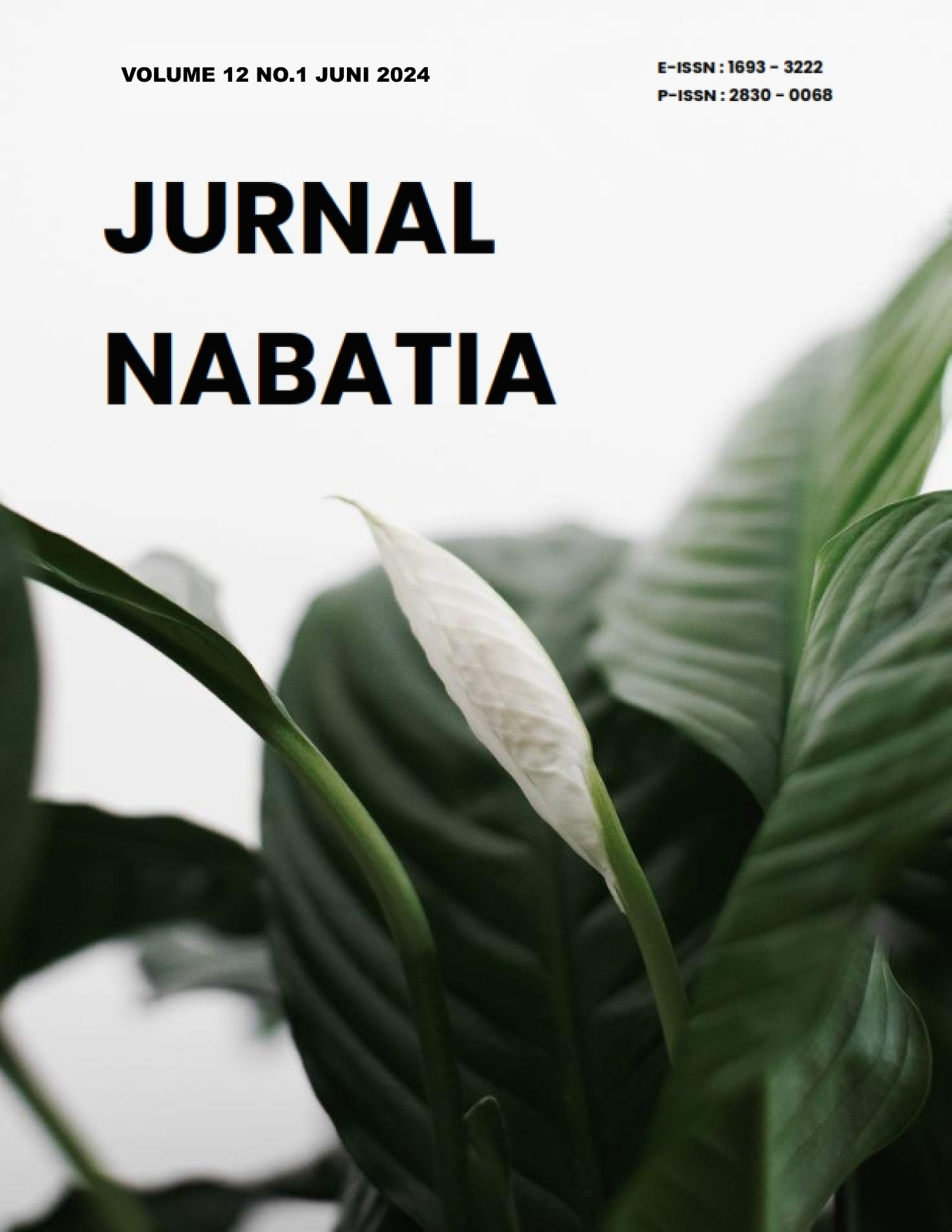The Effect of Alcoholic Extract of Citrullus Colocynthis on The Structural Manifestations of The Parasite Fasciola Gigantica and Its Comparison With The Drug Pendazole
DOI:
https://doi.org/10.21070/nabatia.v12i1.1637Keywords:
Citrullus Colocynthis Alcoholic Extracts, Fasciola Gigantica Infection, Albendazole EfficacyAbstract
The current study aims to find out the effect of alcoholic extracts of the fruit of the Citrullus colocynthis plant, as it was during the current study during the period from 12/2/2022 to 24/4/2023 and by 206 livers for cows, including (31) infected livers and 1348 livers for sheep that did not show infection. In the current study, the incidence of giant liver Fasciola gigantica cows was 15.04%, while sheep hadn't infection during the study period. The results of the current study show that there are different effects in the tissues of the treated worms if compared to the control group, which was showing the integrity of the tissues well after 6 hours, as it is observed the layers of the body wall, spines and muscle layers that cover the wall, as well as the parenchyma tissue in which the body systems are embedded, which did not notice any changes in those tissues and structures, which include (for intestinal backfilling, testicles, mules and uterus). As noted, the damages vary according to the concentration of separation and deformation in the longitudinal and circular muscles, and a few cells are seen in the tenderloin. The thorns are still present in the cover, and the effect of the drug albendazole is little practical Clearly.
References
M. W. Robinson and J. P. Dalton, “Zoonotic helminth infections with particular emphasis on fasciolosis and other trematodiases,” Philos. Trans. R. Soc. B Biol. Sci., vol. 364, no. 1530, pp. 2763–2776, Sep. 2009, doi: 10.1098/rstb.2009.0089.
H. Kurnianto, S. Z. Ramanoon, N. A. A. Aziz, and S. Indarjulianto, “Prevalence, risk factors, and infection intensity of fasciolosis in dairy cattle in Boyolali, Indonesia,” Vet. World, pp. 1438–1448, Jun. 2022, doi: 10.14202/vetworld.2022.1438-1448.
V. Gayo, M. Cancela, and D. Acosta, “Maintenance of Life Cycle Stages of Fasciola hepatica in the Laboratory,” in Fasciola hepatica, Springer US, 2020, pp. 1–14. doi: 10.1007/978-1-0716-0475-5_1.
T. Itagaki, K. Hayashi, and Y. Ohari, “The causative agents of fascioliasis in animals and humans: Parthenogenetic Fasciola in Asia and other regions,” Infect. Genet. Evol., vol. 99, p. 105248, Apr. 2022, doi: 10.1016/j.meegid.2022.105248.
P. Olivares-Ferretti, J. J. Orellana-Cáceres, L. A. Salazar, and F. Fonseca-Salamanca, “Fascioliasis prevalence in livestock from abattoirs in southern Chile,” Austral J. Vet. Sci., vol. 54, no. 1, pp. 29–35, 2022, doi: 10.4067/s0719-81322022000100029.
D. P. McMANUS and J. P. DALTON, “Vaccines against the zoonotic trematodesSchistosoma japonicum,Fasciola hepaticaandFasciola gigantica,” Parasitology, vol. 133, no. S2, pp. S43–S61, Oct. 2006, doi: 10.1017/s0031182006001806.
M. U. Shahbaz et al., “Natural Plant Extracts: An Update about Novel Spraying as an Alternative of Chemical Pesticides to Extend the Postharvest Shelf Life of Fruits and Vegetables,” Molecules, vol. 27, no. 16, p. 5152, Aug. 2022, doi: 10.3390/molecules27165152.
S. Sohani, “Role of Medicinal Plant in Human Health Perspective,” Acta Sci. Agric., vol. 5, no. 6, pp. 65–68, May 2021, doi: 10.31080/asag.2021.05.1006.
M. IRFAN Kepala Lab Patologi and E. dan Mikrobiologi Fak Pertanian dan Peternakan UIN Suska Riau, “RESPON BAWANG MERAH (Allium ascalonicum L) TERHADAP ZAT PENGATUR TUMBUH DAN UNSUR HARA,” J. Agroteknologi, vol. 3, no. 2, pp. 35–40, 2013.
S. Khatri, S. Faizi, S. Fayyaz, and E. Iqbal, “Citrullus colocynthis: A Treasure of Phytochemical, Pharmacological, Pesticidal and Nematicidal Compounds,” Pakistan J. Nematol., vol. 39, no. 2, 2021, doi: 10.17582/journal.pjn/2021.39.2.122.150.
P. ANURACPREEDA et al., “The in vitro anthelmintic activity of the ethanol leaf extracts of Terminalia catappa L. on Fasciola gigantica,” Parasitology, vol. 144, no. 14, pp. 1931–1942, Aug. 2017, doi: 10.1017/s0031182017001445.
N. Saowakon, T. Tansatit, C. Wanichanon, W. Chanakul, V. Reutrakul, and P. Sobhon, “Fasciola gigantica: Anthelmintic effect of the aqueous extract of Artocarpus lakoocha,” Exp. Parasitol., vol. 122, no. 4, pp. 289–298, Aug. 2009, doi: 10.1016/j.exppara.2009.04.011.
L. KIANIFARD, M. YAKHCHALI, and M. IMANI, “The Effects of pH and Temperature on Cysteine Protease (Cathepsin B) Activity in Miracidia and Eggs of Fasciola hepatica,” Iran. J. Parasitol., Jun. 2020, doi: 10.18502/ijpa.v15i2.3305.
L. P. Kamagi, J. Pontoh, and L. I. Momuat, “Analisis Kandungan Klorofil Pada Beberapa Posisi Anak Daun Aren (Arenga pinnata) dengan Spektrofotometer UV-Vis,” J. MIPA, vol. 6, no. 2, p. 49, 2017, doi: 10.35799/jm.6.2.2017.17758.
M. Hambal, H. Vanda, and S. Rani Ayuti, “Nigella sativa Seed Extract Affected Tegument and Internal Organs of Trematode Paramphistomum cervi,” Adv. Anim. Vet. Sci., vol. 9, no. 7, 2021, doi: 10.17582/journal.aavs/2021/9.7.978.982.
Downloads
Published
How to Cite
License
Copyright Notice
Authors retain copyright and grant the journal right of first publication with the work simultaneously licensed under a Creative Commons Attribution 4.0 International License that allows others to share the work with an acknowledgement of the work's authorship and initial publication in this journal.





